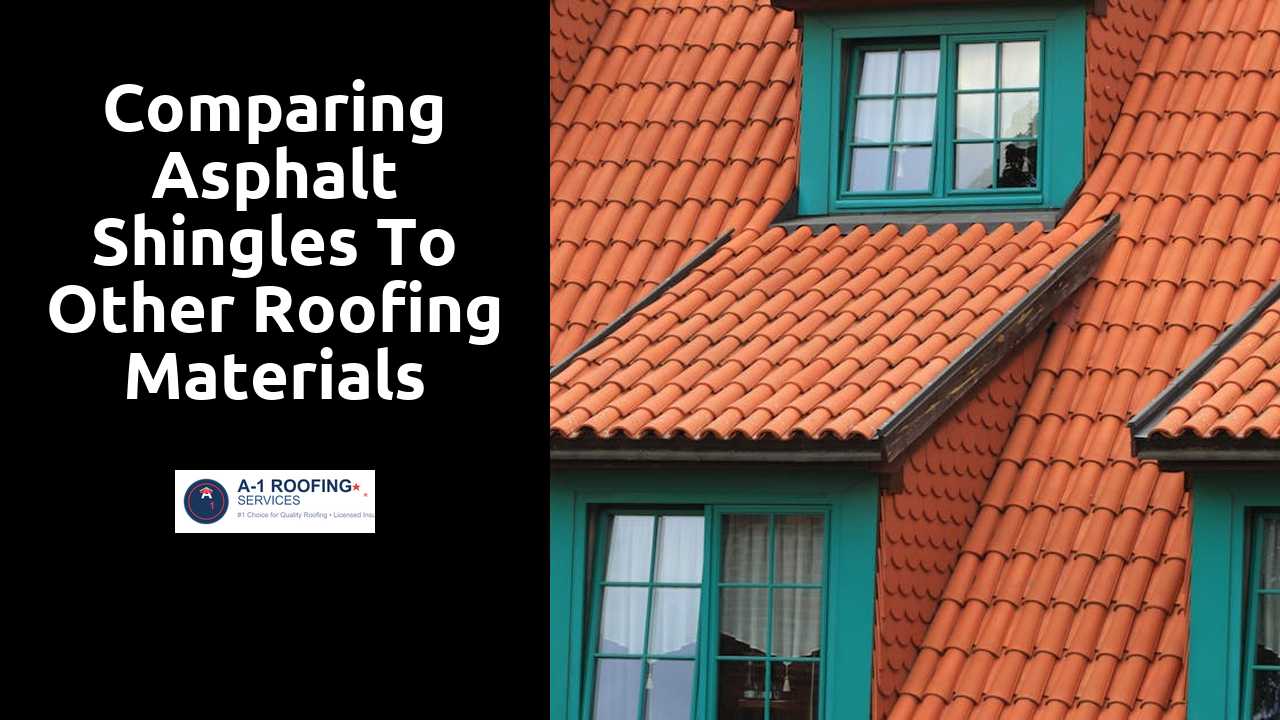
Comparing Asphalt Shingles to Other Roofing Materials
Table Of Contents
Wood Shakes vs. Asphalt Shingles
Both wood shakes and asphalt shingles are popular choices for residential roofing, each offering unique qualities. Wood shakes, typically made from cedar or pine, provide a natural aesthetic and insulation value. They are known for their ability to enhance a home's curb appeal. However, wood shakes require more maintenance than asphalt shingles due to their susceptibility to rot, insect damage, and the need for periodic treatments.
Asphalt shingles, on the other hand, are manufactured from a blend of fiberglass and asphalt. They come in a variety of styles and colors to suit different design preferences. The installation process tends to be quicker and less labor-intensive compared to wood shakes, contributing to cost-effectiveness. Maintenance requirements for asphalt shingles are generally lower, although they can be prone to issues like granule loss over time. Each material has its own advantages and disadvantages, making the choice dependent on personal preference and specific project needs.
This new blog post covers this topic in more detail.
Sustainability and Maintenance Differences
Wood shakes are often praised for their natural aesthetic and renewable qualities. They can be sustainably sourced from forests with responsible harvesting practices. However, their environmental benefits are somewhat counterbalanced by their shorter lifespan compared to asphalt shingles. Wood shakes require more intensive maintenance, including regular treatments to prevent rot, mold, and insect infestation. This ongoing upkeep can negate some of their initial sustainability advantages.
In contrast, asphalt shingles are manufactured using petroleum products, raising concerns about resource sustainability. While their production may not be as eco-friendly, they offer excellent durability and longevity, typically lasting around 20 to 30 years with minimal maintenance. The ease of repair and replacement also contributes to less waste in the long term. Homeowners appreciate that asphalt shingles do not demand frequent upkeep, making them a practical choice for those seeking a balance between performance and environmental considerations.
Synthetic Roofing Options
As synthetic roofing materials gain popularity, homeowners are increasingly attracted to their lightweight composition and versatile design options. These materials often mimic the appearance of traditional products like wood shakes or slate while offering enhanced durability and resistance to harsh weather conditions. Homeowners appreciate the broad array of colors and styles available, allowing for aesthetically pleasing choices that fit various architectural designs.
Another key benefit of synthetic roofing is its eco-friendly nature. Many options are made from recycled materials, reducing waste and minimizing the environmental footprint. These materials generally require less maintenance compared to traditional roofing, further contributing to their appeal. Homeowners can enjoy the combination of aesthetic value and practical benefits, making synthetic roofing a competitive alternative in the market.
Performance and Environmental Impact
Synthetic roofing materials have gained popularity for their unique blend of durability and eco-friendliness. Many of these products simulate the appearance of traditional roofing materials while offering superior resistance to extreme weather conditions. Their longevity often surpasses that of asphalt shingles, which can be prone to wear from UV rays and temperature fluctuations. Homeowners appreciate the reduced maintenance needs of synthetic options, contributing to their overall performance and longevity.
Environmental impact is a critical factor when considering roofing materials. Asphalt shingles typically have a shorter lifespan compared to synthetic alternatives, leading to more frequent replacements and increased waste. In contrast, many synthetic materials are made from recycled content and are designed for recyclability, which can significantly decrease their environmental footprint. Selecting roofing options that prioritize sustainability can benefit not only the home’s performance but also help in reducing overall ecological harm.
Installation Process of Asphalt Shingles
The installation of asphalt shingles requires careful preparation and attention to detail. First, the existing roof must be inspected for any damage or debris. Roofers usually start by installing an underlayment, which acts as a protective barrier against moisture. The underlayment should completely cover the roof deck to ensure proper performance. Once this layer is in place, shingles can be laid in a staggered pattern starting from the bottom edge and working upwards.
Each shingle needs to be adequately secured using nails placed in the correct locations to prevent wind uplift. Overlapping the shingles appropriately is crucial for water drainage and to minimize potential leaks. Once all shingles are installed, a thorough inspection is recommended to check for any misplaced or unsecured tiles. Proper ventilation should also be ensured to prolong the lifespan of both the shingles and the roofing system as a whole.
Step-by-Step Overview
The installation of asphalt shingles involves several essential steps to ensure a proper fit and long-lasting performance. Begin by preparing the roof deck, which includes cleaning and repairing any damaged areas. Once the surface is ready, add a moisture barrier to protect against water infiltration. Following this preparation, lay down the starter shingles along the eaves to establish a solid foundation for the subsequent layers.
As shingles are installed, it is important to overlap them according to manufacturer guidelines. This overlapping technique enhances waterproofing and prevents leaks. Use roofing nails to secure each shingle, placing them in the recommended spots to avoid nail pops. Continue this process up to the peak of the roof, ensuring a uniform appearance and adequate coverage. Finishing touches include installing ridge cap shingles along the top, sealing any exposed nails, and ensuring all edges are properly finished for optimal protection.
Related Links
The Durability and Lifespan of Asphalt ShinglesInstallation Techniques for Asphalt Shingles